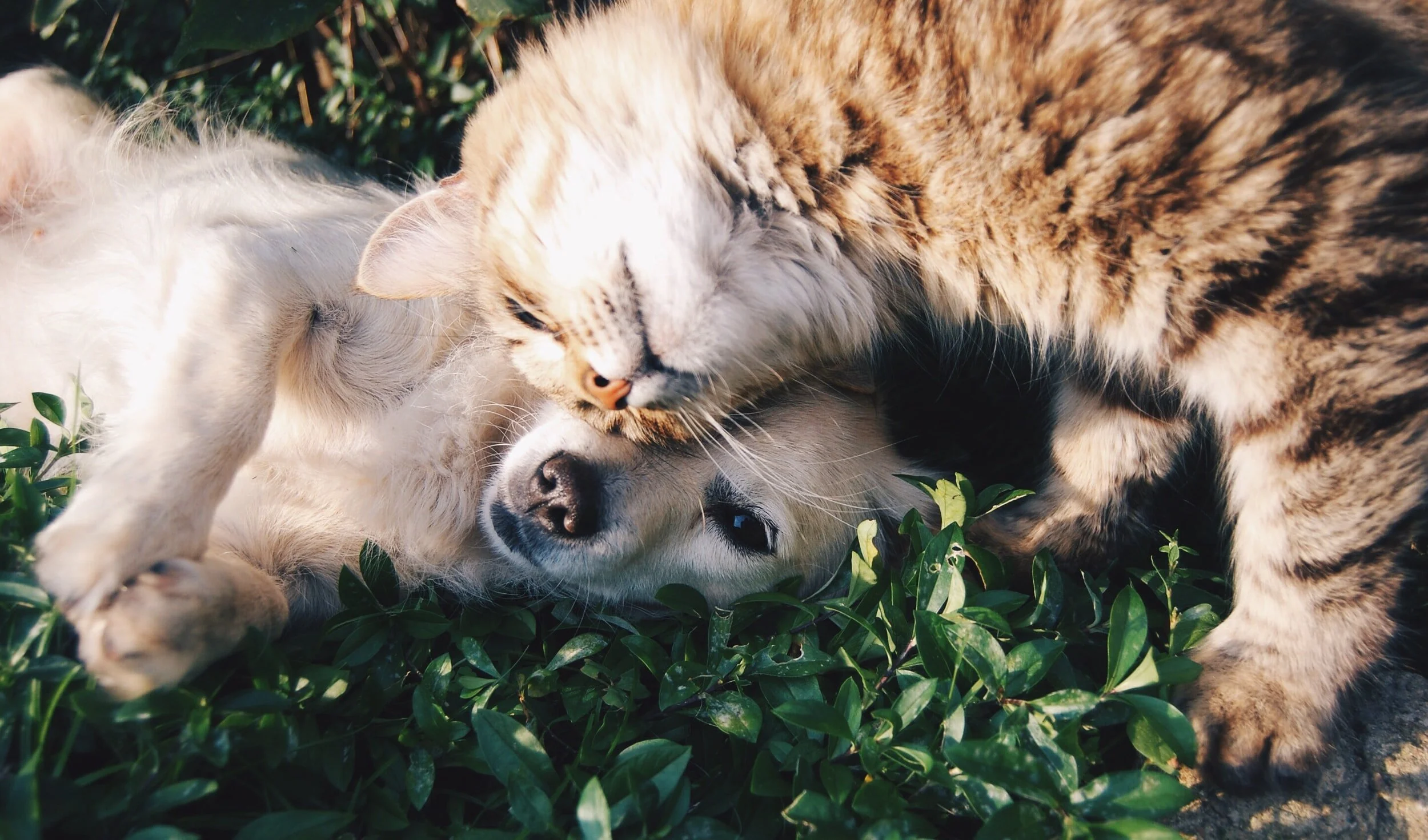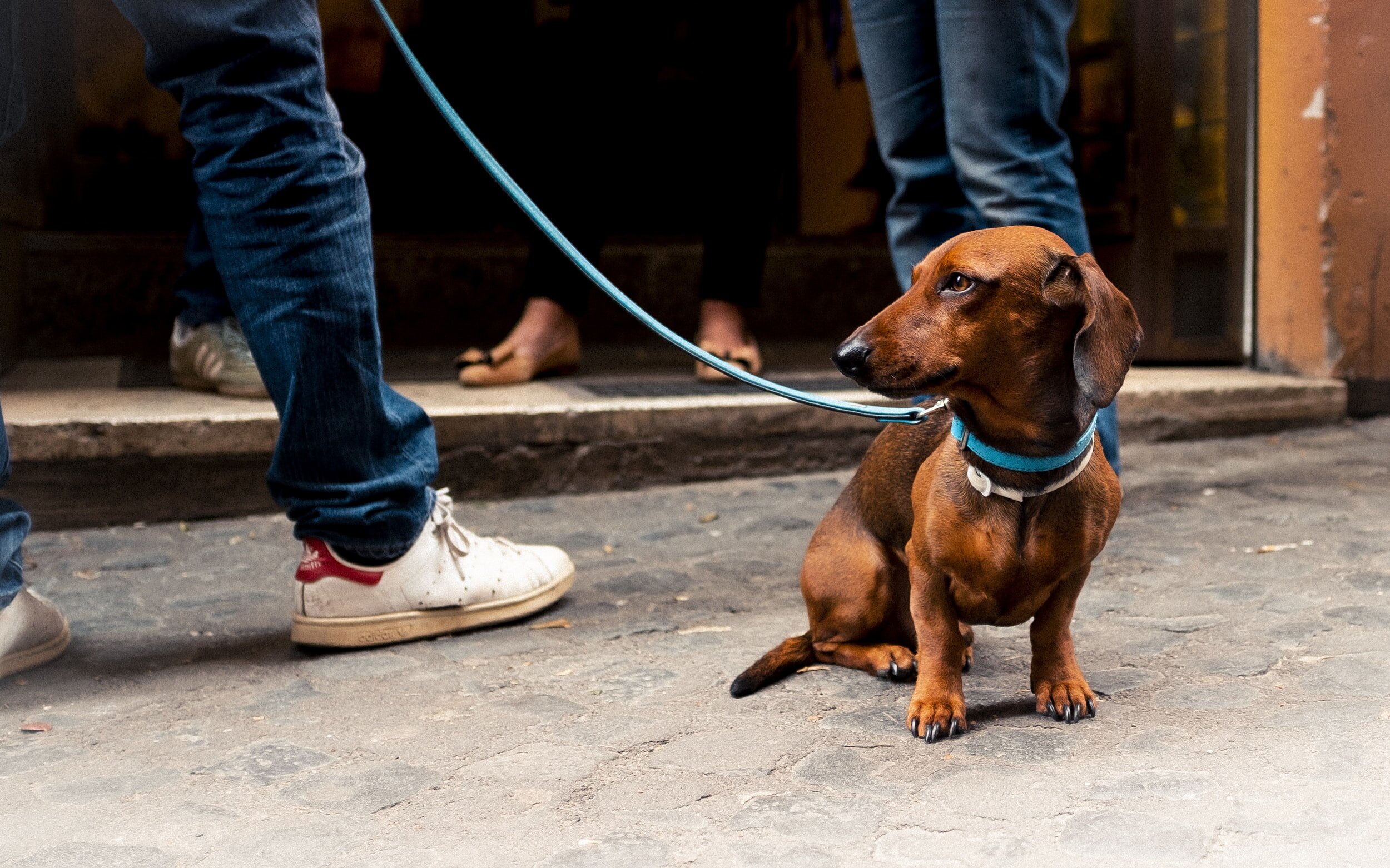In-home puppy sessions help YOU and YOUR puppy navigate YOUR unique in-home situation (Photo: two guinea pigs munching on grated carrots)
Over the past few weeks, I’ve received a lot of calls from puppy owners who aren’t getting the results they want from puppy classes.
“All we learned was sit, stay, and shake a paw. Literally. How do I get him to stop biting me?”
“They showed me how to hold her collar tightly when she’s misbehaving. It riles her up and makes her growl at me. I’m afraid she’ll bite me…and my kids!”
“I learned how to hold the leash up high in front of my face until she sits and calms down. My wife’s arms aren’t long enough to do it, so our puppy can reach and bite her during this process.”
I’m not here to bash puppy school, but I will tell you this: you won’t learn everything you need to know, and sometimes you’ll learn things that won’t work for your dog.
The collar hold and the “holding the leash up high (essentially choking them out) until they sit: that was shown to a family with a pitbull puppy. I would never recommend this technique to anyone, let alone if you own a bully breed.
This technique creates conflict and adds constant pressure.
There was NO MENTION to this family of what energy THEY were bringing to that conflict-causing collar grab. They were extremely frustrated by the time they went to begin the “technique.”
Are you accidentally building a NEGATIVE ASSOCIATION to touching your puppy’s collar? How are you going to put their leash on after off-leash play? (Photo: white pitbull mix wearing a red collar sits in a field off-leash)
Dogs will not listen to you if you are tense and frustrated. They will not listen to you if you are worried whether or not you’re doing the technique correctly while you’re in the middle doing it.
How you are feeling 100% matters. When commanding a dog and asking him to follow your direction, you must be calm and confident. Dogs are designed to follow calm and confident leadership. It’s in their DNA. You will NEVER see a pack of feral dogs with a canine leader who is nervous, unsure, scared, tense, aggressive, unfair, or frustrated. Dogs follow BALANCED LEADERS. When we invite dogs to live with us in the human world, we take on the leadership role, OR the dog takes on the leadership role. It has to be filled. You’re a pack now. Are you the leader or are you the follower?
Your children can learn to lead too! We LOVE teaching children to lead. It’s way more fun than being used as a chew toy! (Photo: Toddler leading a terrier on a walk)
Let’s talk about the family who learned sit, stay, and shake a paw. When we met in person, they told me, “she actually doesn’t even KNOW stay, so maybe you could show us that too.”
This puppy is a shy, back of the pack pup. How do I know this? She shows me with her submissive peeing. Another thing they didn’t learn about in puppy school.
First: Not all puppies go through submissive peeing. Some puppies lack confidence and are a little shy. There’s nothing wrong with this, you simply need to learn how to build confidence in your shy puppy.
Second: Talking in a high-pitched voice, moving towards your puppy too quickly, making eye contact, leaning over your puppy, reaching toward your puppy when she’s showing apprehension about your approach, and allowing strangers to pet your puppy before she is ready are all causing this submissive peeing to continue.
Third: Most puppies will grow out of this phase, but you can speed this up by coaching your family, houseguests, and strangers on the street how to greet your puppy properly. Have them practice: no touch, no talk, no eye contact until your puppy is CALM. They should get low and allow your puppy to come to them and allow her to sniff. Just because your puppy is brave enough to move into someone's personal space, does not mean she is ready to be petted.
Fourth: Don’t get annoyed at your puppy and the pee mess. She’s not doing it on purpose. Imagine how it must feel to feel so intimidated, shy, or fearful when strangers approach that you are scared enough to pee. Advocate on her behalf (this means educate people not to barge into her space, reaching to pet her, and talking excitedly.) If you need help speaking up, believe me, I fall into the “way too nice” category myself, try this:
“Sorry, you can’t pet her right now. She’s in training. Thanks for asking though.” It worked for me.
People want to pet your puppy no matter what bad behaviour they are doing. It’s okay to say NO. If you NEVER ALLOW anyone to pet your puppy while she’s putting her feet on them, you will NEVER have to correct it later with a trainer when she’s older and it’s no longer “cute.” (Photo: doodle puppy lunging excitedly toward the camera lens with her two front feet off the ground)
How to find a puppy school whose techniques will work for you and your puppy:
Call and interview them on the phone. Do they call you back in a timely fashion? Are they happy to answer all of your questions?
Ask to go and watch their sessions BEFORE YOU ADOPT YOUR PUPPY. If they say no, and believe me, some in this area will: HUGE RED FLAG.
Read all of the Google Reviews
Ask everyone you know who has been to puppy school what they liked and what they did not like about the classes.
Trust your gut.
One of my clients recently reached out to puppy schools in our area. She reported that the man on the phone was rude, made her feel like she was an idiot, and basically told her that she was ruining her puppy by not having him in school yet. Needless to say, she’s not going to give that company her business.
Take your time, shop around, and find the right fit for you and your puppy to learn and grow as a team.
Remember: Dog training is a lifestyle. You must take the things you learn in puppy school and practice them every day at home. You must also research and read on your own and fill the gaps (if any) that the puppy school doesn’t teach you.
Don’t focus on tricks.
I’ve had two clients who have had dogs who can do very lovely “leave it” tricks…and their puppies were both food aggressive.
Focus on RELATIONSHIP over tricks in the beginning. For example, teach your puppy not to pull on the leash and become your leader; teach them not to bite the leash; teach them a rock-solid recall. Teach them how to feel safe and happy when you are not at home (crate training) to prevent separation anxiety. Teach them what they are allowed to chew and what they are not allowed to chew in your home. Show them that your children are not chew toys. Teach them to be calm around food. All of these little things matter in your overall relationship.
If you’re struggling with crate training, puppy chewing, counter surfing, sock-stealing, nipping/biting, and leash pulling, in-home puppy training will help.
Is in-home puppy training the right option for you? Schedule your free call here: https://beyonddogtraining.ca/take-action
Remember: A dog who doesn’t listen to you inside your home will not listen to you outside the home.
Practice. Take you time. Build a strong foundation. Learn everything you can about dog psychology. Be patient with yourself.
And have fun! Lots and lots of fun!
A balanced, calm puppy can learn to get along with your other pets. Schedule a free call and find out if we’re the right fit to help you improve your pet’s lives. (Photo: cat and dog snuggling on the grass)
What’s up with the guinea pigs? They’re just some of the other friends whose lives are improved with in-home training. Your puppy CAN learn to be calm around your other pets (and livestock.) We’ve helped guinea pigs, hamsters, birds, cows, alpacas, sheep, and lots and lots of cats to live in harmony with dogs.
Have an AMAZING weekend, Dog Leaders!
Alyssa
Photos by: Bonnie Kittle @bonniekdesign (two guinea pigs munching on grated carrots,) Overture Creations
@overture_creations (white pitbull mix wearing a red collar sits in a field off-leash,) Upsplash image (Toddler leading a terrier on a walk,) Upsplash image (doodle puppy lunging excitedly toward the camera lens with her two front feet off the ground), Krista Mangulsone
@krista (cat and dog snuggling on the grass.)























































